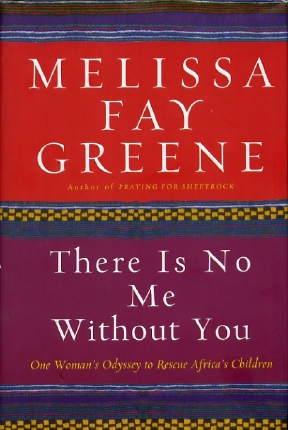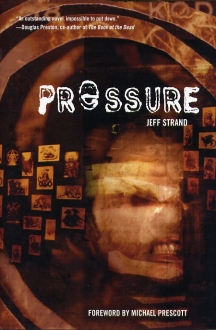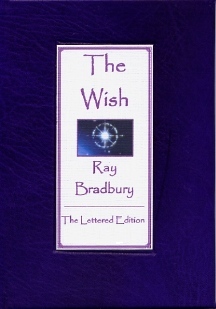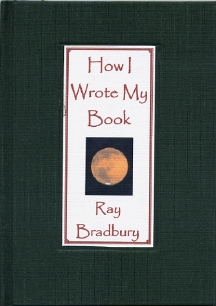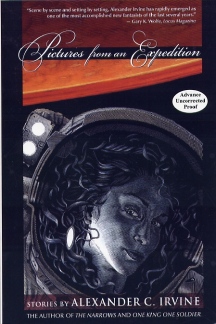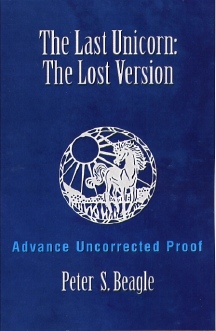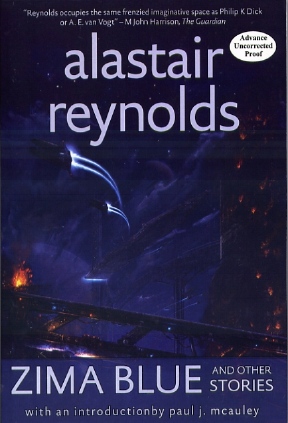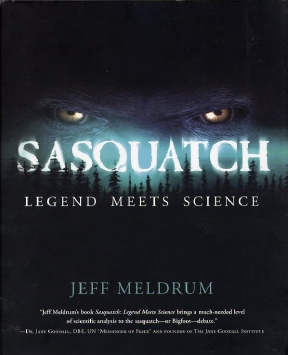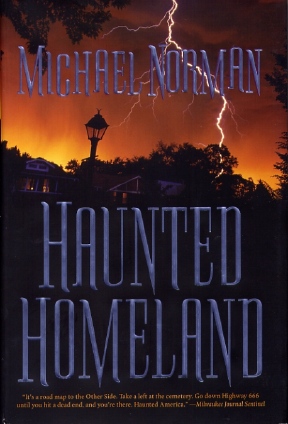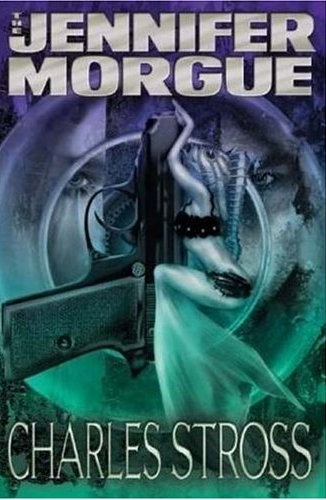|
|
|
This Just In...News from the Agony Column
|
09-29-06: Melissa Fay Greene Knows 'There is No Me Without You' |
|||
Can
One Woman Save 10,000 Children?
"On a dim, clattering afternoon in the rainy season, I sat in a crowded living room in Addis Ababa, Ethiopia, stupefied by water." That's how Melissa Fay Greene brings us into her latest book, 'There Is No Me Without You' (Bloomsbury ; September 5, 2006 ; $25.95), and it should give you a good idea as to why you'd want to join Greene on a journey that at best seems to offer the potential entrée into a permanent state of depression. Greene is tacking just about the toughest subject you could choose to write about in this book. The AIDS orphans of Africa; it doesn't get any harder, any more unpleasantly real than this. So how did it get into my queue? The short answer is: 'The Temple Bombing'. For reasons I cannot even begin to explain, when this one came out, in 1996, I bought it in hardcover. Sure, at the time, I was not yet all that interested in what any genre fiction had to offer, beyond the work of a few chosen authors. But still, I can't now say what drew me to a social history of the south in the late 1950's, culminating the bombing of a Jewish temple by neo-Nazis. But what made me buy the book is somewhat irrelevant. When I plunged into Greene's world, there was no going back. She's an incredibly talented writer who brings a novelistic thrust to her work, and I found 'The Temple Bombing' to be ultimately very memorable -- the kind of book that I can go back and visit, the kind of reading experience that becomes the equivalent of memories. And in spite of the fact that Greene dealt with times and people and places and events that certainly weren't interesting to me in themselves, Greene's writing in 'The Temple Bombing' made all those things utterly fascinating. But work like Greene's does not apparently come at a rapid rate. That suggests there's a reason why when she's written four books, two have been finalists for National Book Awards; 'There Is No Me Without You' looks like it could quite possibly garner her a third. But again, none of that does matter or will matter once you open up the book. 'There Is No Me Without You' is the story of Haregewoin Teffra, who, after the deaths of her husband and her daughter, found herself becoming a recluse in her suburban life in Addis Ababa, Ethiopia. Already we're in utterly foreign territory, at least I am. Again, my ignorance is disturbed -- I would never have known there was a middle class suburban life in Addis Ababa. But Greene takes us there with intense and perfectly turned prose, the kind of writing that could create worlds were to be turned to that purpose. And it is, really. Teffra's solitude is broken when a priest delivers first one, then another orphan child into her care. The children blossom as does Teffra; and her world. Greene takes us there as Teffra finds herself in charge of more and more children, finds that a single woman, and single person can do something about a problem that is so terrifying we tend to shut down rather than force ourselves to think about it. The deal with 'There Is No Me Without You' is that as readers, we don’t shut down. We're seduced by Greene's rich prose, her detailed vision and her ability to marshal the events of a life, the events of many lives into some kind of coherent and utterly ultimately satisfying whole. Greene's book is an example of why we read, and it's the kind of non-fiction that you'll find yourself referring to as if it were a novel. Greene has the ability as a writer to make us care enough to read, to make us enjoy her skill as a writer, her joy in the world around her. Greene will bring her world to you, and she'll serve it up with all the power that a great writer can bring to the page. The reason we read is that books are the great equalizer. As much as I like the physicality of books, and enjoy fine books, in the final analysis, books are just words, and a great writer can shine through them, can make anything worth reading about. Think of David Simon's 'The Corner'; David Blackbourne's 'Marpingen: Apparitions of the Virgin Mary in a Nineteenth Century German Village'; or Alan Deutschman's 'A Tale of Two Valleys'. There are all books that might have escaped me, but each of them has somehow more staying power than most novels. Melissa Fay Greene writes with that kind of power. She is, in the end, simply a good writer who will create memories of places you have never seen. Memories so detailed, so artful that you will be able to, you will want to, visit them. In unexpected moments. |
|
09-28-06: My Life in the Bush of Books, part er, Six? |
|||||||||||||||||
An
Independent Press Roundup
But the deal is, is that Salinas, American City that it is, is the home of everything Steinbeck, including a wonderful museum/institute. The reason I'm blathering on about this is not just the T-shirt, but the reality that even the most unprepossessing cities in America can offer up mind-boggling literary treasures. We know that everybody does not like every dessert, so we're going to do the literary equivalent of poking the bottom of the See's candy to check the filling for you. And here comes the platter. We need look no farther than the City Imperishable to find out that Jay Lake is setting up a 'Trial By Flowers' (Night Shade ; November 2006 ; $14.95 TPB). Lake's City Imperishable is quite likely to be a tad more hazardous than Salinas, but no less a fount of literary brilliance, assuming that you like your fantasies to unfold in a decadent urban environment. When I say decadent, I mean really decadent and quite often disturbing. Lake is quite happy to take readers right over that knife-edge that lies hidden between horror and fantasy. In fact, he's willing to go back and forth until you're really certain of just where those borders lie, both within you as a reader and within the gritty world that Lake has created. But Lake is the kind of writer who can take grot and grim to levels of beauty as well as horror. There's something ethereal afoot in the City Imperishable. Long may it rot!
But the whole world has not yet gone to hell in a handbasket. At least not that part of the world in the vicinity of Poppy Z. Brite who suggests that we 'D*U*C*K' (Subterranean Press ; January 2007 ; $45). Brite once again returns to the New Orleans and Louisiana settings of her previous novels, but without the intervention of a certain deadly hurricane. In a preface to the novel she writes, "A new body of literature has begun to emerge from New Orleans, South Louisiana, and the Gulf Coast. It's known as "Katriniana" and I've collected almost every piece of it published so far. This book, however, is not a part of it." OK. So 'D*U*C*K' with its M*A*S*H-up cover, is instead, "a tale of men, birds and one's purpose in life." One of the men, at least would be Chef John Rickey, the birds would be ducks, and the purpose in life would be annual banquet of South Louisiana Branch of Ducks Unlimited. Completed before the storm, 'D*U*C*K' takes place in a "slightly alternate universe." (Read: no hurricane.) Brite stretches her wings as a humorist here, and not surprisingly she easily takes flight and avoids the shots. Ever tried to cook for a crapload of hunters? Sounds like fun, huh? I think in this case, the fun is in the reading.
Since more is more and there is always more, why not get the gift buying done early with Alexander C. Irvine's 'Pictures at an Exhibition' (Night Shade Books ; December 18, 2006; $14.95 TPB)? After all, it is impossible to ignore the pull of a short-story collection that includes the World Fantasy Award nominated 'Gus Dreams of Biting the Mailman' when you have a pug snoring in her basket, isn’t it? Even if you don’t have the pug snoring, or occasionally barking at the mailperson, Irvine should have been on your auto-buy list from the get-go with 'A Scattering of Jades'. With a scattering of stories that have been published in disparate venues since the turn of the century, you can consider the all-new story, 'Clownfish', the icing on this particular piece of cake. "Would you like a taco?" was the line that totally sold me on Peter S. Beagle's 'The Last Unicorn'. So if you would like tacos for dessert (I'm the kind of person who does like a good carnitas taco from El Abajeno in Culver City, California for breakfast, lunch, dinner and dessert), then perhaps you'll wish to pick up 'The Last Unicorn: The Lost Version' (Subterranean Press ; December 2006 ; $35 HC). Beagle's work completely changed my perceptions of fantasy back in the day and it continues to do so with those folks who are today perceiving the fantasy genre as beginning and ending with LOTR. This is the original, 80-page fragment, the shard that became the diamond. Only to reveal that it was always a diamond. Can you go wrong giving diamonds as a gift? Only if you give someone stupid rocks. Books, on the other hand, are always welcome.
And as the dessert tray rolls away, be warned that though there are no calories in these particular desserts, still, they'll require some exercise to burn off the buzz you get from so much great reading. You'll need some reminder, after all, that there is a world out there and you’re moving through it. If only for long enough to make some money, the better to buy your next dessert. It will be just! |
|||||||||||||||||
|
09-27-06: Alastair Reynolds' 'Zima Blue' |
|||
Human
Remains
Alastair Reynolds has the skill to evoke our intuitive understanding of how universe and humans map back and forth, one to the other, and he's able make his maps with words. 'Zima Blue' (Night Shade Books ; December 5, 2006; $26.95) is a collection of Reynolds' short stories that demonstrate his skills as a mapmaker, a man who can define the equivalents between we humans and our perceptions of a universe as large without as we are within. Plus, he can wrote one hell of an entertaining yarn. The two skills are not unrelated. While many of Reynolds' stories take place against a single backdrop, the universe he created for 'Revelation Space', 'Chasm City', 'Redemption Ark' and 'Absolution Gap', this isn’t his only vision. The stories in 'Zima Blue' collect Reynolds' explorations beyond that machine-haunted low-hope zone. They map out regions of human experience within our scientific understanding of the universe that suggest there's as much humanity to explore as there is universe. But they don’t stint on story, on the lizard-brain brain pleasure of reading about space adventures. In fact, they gain access to the former through the latter. This is your lizard-brain on stars. This collection has been a long time in the making, and features the editorial talents of Marty Halpern of Golden Gryphon as well as the publishing mojo of Jeremy Lassen and Jason Williams of Night Shade. It covers nearly the whole spectrum of Reynolds' career, from 'Enola', his third sale, first published in Interzone, to the never-before published 'Signal to Noise'. You'll find in here work from Reynolds which pulls in from the wide-angle visions of the 'Revelation Space' universe and work that goes farther out. But what remains at the core of all the explorations here, the ultimate destination of the exploration here, is the human. Reynolds is willing to go wherever he needs to bring us back to ourselves via the lizard-brain your-brain-on-SF express. He has the science chops to create utterly believable scenarios of futuristic technology, and the gut-level instincts to spin out those scenarios with an intuitive understanding of what happens when humans get their hands on these technologies. It's not always pretty, but it is always gripping. Yes, there's the slack-jawed drool factor of how Reynolds' is able to set up his futures and his plots. It’s the kind of compelling, intelligent fun that made many of us read science fiction in the first place. And the reason it is compelling is because though Reynolds' characters may be heading into deep space, or an alien artifact they hope to be an enormous weapon, or discovering a viral meme, or a hive mind, no matter what their destination -- they always arrive at a point of human understanding. Yes, the science fiction rules, no doubt. We love these speculations, from the goofy to the deeply disturbing. They make enjoyable reading, these word maps that ring round an idea that in and by itself is simply thrilling to contemplate. But no matter what the destination, no matter what ideas of rocket-ship-speed plots Reynolds uses to set our lizard brains afire, he manages to always get us back to us. The human remains. |
|
09-26-06: Forging a Second Identity |
||||||
Michael
Norman's 'Haunted Homeland' and Jeff Meldrum's 'Sasquatch'
But as many Forge titles as I've seen, I've never seen any quite like these two, and they're both pretty interesting. 'Sasquatch: Legend Meets Science' by Jeff Meldrum is the most straightforward, so let's start there. First off, obviously, perhaps, what we have here is a non-fiction book, and I guess that's part of the oddness. The cover design here, nice though it is, is clearly reminiscent of the fiction titles, even though the book is clearly not fiction. If you've read a few Tor books and seen a few Forge titles, it might cause some cognitive dissonance if not outright confusion. After all, Tor often partners with the SciFi channel, who recently broadcast yet another bad original movie, this one something to do with Bigfoot. You might suspect that this is a novelization of that bad movie, but you’d be wrong. Still, I'm used to seeing this "look" for a fictional title, and 'Sasquatch' is not fictional. Really! 'Sasquatch' is associated with a television program, but not from the SciFi channel; instead it’s from the Discovery Channel special of the same name. I missed that too, but frankly, I'm happier with the book which is a lavish, well-written affair by the protégé of Grover Kranz, who wrote 'Big Footprints'. I actually own and have read 'Big Footprints', which seemed to be to as sober as one can get with these sort of books, on par with the fine work by Loren Coleman. So, what's up with 'Sasquatch' and who wants to or needs to read it? Fist and foremost, let me say that Forge has done an outstanding job on this book. It's an unusual format, 8" by 9 1/2" instead of the usual 6 1/2" by 9 1/2". It's engagingly written, and includes a boatload of photos and illustrations; B&W embedded in the text and a slick center selection of full-color plates. Nice. It's the sort of thing that might get cracked by your precocious pre-teen, and has enough pick-it-up-and-browse appeal that it would make a good coffee table book. Meldrum is a primatologist who specializes in studies of how primates move and how their motion is supported by their physical structure. In 'Sasquatch', he goes step-by-step though the evidence, and reading about this is pretty interesting, assuming that cryptozoology is of interest to you. The illustrations that pepper the text make the book much easier to read than it might otherwise be. Meldrum makes a great case for the evidence being at least worthy of examination and he examines it carefully. The real question you have to ask yourself is: Do I want to read non-fiction about Bigfoot? If the answer is yes, and you've read Kranz' 'Big Footprints', Coleman's many works on the subject ('Tom Slick and the Search for the Yeti' / 'Tom Slick: True Life Encounters in Cryptozoology'), then Meldrum's book is a great chaser and bringer-up-to-date. And there are lots of questions to answer, particularly with regards to DNA analysis of purported Bigfoot hairs and droppings. And yes, Meldrum gets there. Is it worth going on the journey with him? Definitely, ikf this is the sort of journey you're interested in making.
Well, Norman collects second-hand tales of the supernatural. It's a FOAF-story bonanza, a collection of vignettes and morality plays from the heart of America and the hearts of Americans, all those "friend of a friend" warnings that also get tagged with the label of "urban legend". But these are not just urban legends; they’re suburban and rural legends as well, covering a a wide variety of situations, moralities and supernatural stylings. You'll get ghosts, haunted places, apparitions, the sort of thing you might see in that Jonathan Frakes show that used to run on SciFi channel. The stories are supposedly real, but written / scripted / presented as if they were fiction pretending to be real. Does this make sense? Not really, and that's the point. There are places where reality breaks down, and this is clearly one of them. For me, 'Haunted Homeland' is a nightstand book, something to read a couple of short bits from before closing one's eyes, in those spaces when one does not have the attention span to focus on a novel. The stories are well-enough written, if often on the familiar side; but then familiarity should be part of the appeal of this package for you. Some are told as if they are short-short stories and others done in a reported style. Norman provides a selected bibliography and an index of place names. Writers working on horror fiction might well consider one or both of these books for background material and research. I'm not sure how much mileage anyone can get out of Sasquatch with regards to fiction, but it’s the kind of book that might definitely lure a kid away from a video game. 'Haunted Homeland', with its weird mix of non-fictional and fictional presentation is itself a sort of supernatural phenomenon. And with both books coming from an imprint usually for me, at least, associated with fiction, there's a weird vibe going down all around. That's not a bad thing, but it is a thing. If nothing else, you'll have to train your eyes accordingly and may have to poke about the bookstore to figure out where they've shelves these books. They may end up in non-fiction, science fiction, horror, true crime, or even god forbid "paranormal", if you are so "fortunate" to have a bookstore with such a ghetto. But if you are going "In Search Of..." so to speak, some decently done books from the borderland, well here are some weird books for weird people. Are you weird enough for these books -- or normal enough? Will Forge forge ahead in the blood new world of the paranormal? Time and sales will tell the tales. |
|
09-25-06: Genre Ducking |
|||
A 2006 Interview with Charles Stross
Everybody
gets a bee in their bonnet now and again. I certainly do,
and as I prepared to speak with Charlie Stross about his many
new novels, whether they be fantasy ('The Clan Corporate'),
science fiction ('Glasshouse') or horror ('The Jennifer Morgue'),
I began to wonder about Stross and all his genres. Certainly
it seemed that he did everything, and did it well. But what,
underneath it all, was Charlie Stross about? That's what I
hoped to find out. *Accent detection error 0() |
